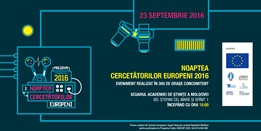 As part of the work programme 2016-2017 of the societal challenge 5 “Climate Action, Environment, Resource Efficiency and Raw Materials” (SC5) of the Horizon 2020 framework programme, the European Commission intends to open calls for large-scale pilot/demonstration projects. This builds on the advice from the Societal Challenge 5 Advisory Group and on the response to a public consultation in spring 2014[1] for preparing a scoping paper for the 2016 – 2017 work programme.
As part of the work programme 2016-2017 of the societal challenge 5 “Climate Action, Environment, Resource Efficiency and Raw Materials” (SC5) of the Horizon 2020 framework programme, the European Commission intends to open calls for large-scale pilot/demonstration projects. This builds on the advice from the Societal Challenge 5 Advisory Group and on the response to a public consultation in spring 2014[1] for preparing a scoping paper for the 2016 – 2017 work programme.
The present call for ideas for pilot/demonstration projects is intended to (i) help identifying which research and innovation areas attract most interest from innovators and innovation users (e.g. industries, financial actors, academia, research and innovation players, private or public entities, regions, cities, citizens and their organisations…) and (ii) stimulate developers and providers of innovative solutions to engage in projects of greater ambition in terms of scope, scale and impact.
Pilot/demonstration projects are expected to realise and test new technological and non-technological solutions through first-of-a-kind experimental development under real life conditions. They are innovation projects, exhibiting a sufficient level of novelty and progress with respect to the state of the art. Embodying a systemic approach to innovation, they may address all forms of innovation (technological and technical, business model, finance, regulatory, governance and social innovation as well as any other type of non-technological innovation to realise a solution or overcome bottlenecks). In technological development, projects are normally expected to target technology readiness levels of 5 to 7[2].
Pilot/demonstration projects will be sought of larger scale than the projects proposals presented – on average – under previous framework programmes in analogous areas. Projects will be expected to have appropriate critical mass and involve all the actors required to deliver innovative solutions to societal challenges and deploy them. Their design will be expected to maximise impact and economic, social and environmental co-benefits, and to demonstrate a clear added value at EU level. European or international replication potential in different contexts will be an important criterion. Read more…






